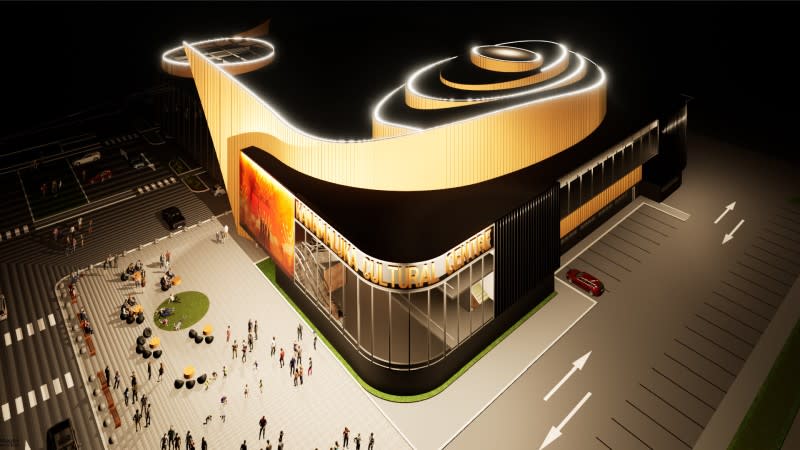Council Backs $70m Cultural Centre Plan for Launceston

The Launceston council has agreed to help fund the development of a new cultural centre at Kings Wharf.
Developer Errol Stewart of JMC and the Tasmanian Symphony Orchestra announced plans earlier this year for the centre, at the corner of Kings Wharf Road and Lindsay Street.
The Tasmanian Aboriginal Centre has approved the naming of the centre as Kanamaluka, the original name of the River Tamar.
The centre will include an 750-seat auditorium, a 1000-seat conference space, an Indigenous art and cultural space, exhibition and function halls, bars, a cafe and a black box space for performing arts as well as a recording studio, outdoor screen and digital studio.
The City of Launceston has agreed to fund the project application fees, a cost of $38,286.
Stewart is lobbying the federal and state governments for $40 million and $20 million in funding respectively. Another $5 million will be raised privately.
The cost of the project is currently estimated at $70 million.
It is proposed that the centre would be operated and underwritten for the first five years by Accor Hotels and its Silo Hotel in the city. A to-be-established government body would then operate the centre.
A 140-room, $30-million hotel is also planned for the precinct.

Stewart said the project had an estimated date of completion in 2024 with hopes that an application would be approved later this year. The hotel is an additional component.
“If we get the gig and get the nod on the development of Kanamaluka, we would then build another 100-room hotel, potentially 120 to 140 rooms,” Stewart said.
“We just need some money.”
The Tasmanian Symphony Orchestra has a subscriber base in Launceston that requires a fit-for-purpose concert hall as its current venue, the Albert Hall, is being redeveloped fulfill a plenary role.
The orchestra’s chief executive Caroline Sharpen said it also gave them the opportunity to have up-to-date facilities.
“We have already upgraded the concert hall in Hobart,” Sharpen said.
“There’s a 400sq m studio space which will have state of the art digital infrastructure and that’s about taking Tasmanian culture to the rest of the world via livestream and video-on-demand.”
It is estimated that the centre will be hired for around 70 days per year and have a capacity for 49,000 people at concert, plenary and community events.
It is expected 80 per cent of attendees will come from the greater Launceston area with 10 per cent from Hobart, 5 per cent from elsewhere in Tasmania and 5 per cent from interstate.
The centre will host an average 19,000 conference delegates annually, and are forecast to spend $7 million per year while hotel guests will spend $7.2 million per year.
Before the pandemic, 52 per cent of domestic tourists travelled to Launceston for leisure as did 68 per cent of international tourists.
More than 250 full time jobs will be created and $33 million added to the state economy per year during construction with 98 ongoing fulltime jobs created and and estimated $9.3 million added to the state economy annually once operational.














